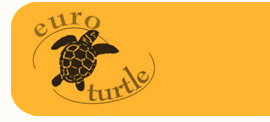Threats
Pollution: A large proportion of waste produced by human
activity ends up directly or indirectly in the sea. Polluted
murky water reduces the quantity of light, inhibiting growth.
Sewage and fertilizers cause an increase of particular biota
further reducing neccessary oxygen concentrations.
Non-native seaweed species: Non-native seaweed species that
tend to be more vigorous and taller than posidonia are taking
over large proportions of subtidal coastal zones. Introduced
species such as Caulerpa taxifolia are very fast-spreading
and can colonize muddy and sandy sediment, cobbles and hard
substrate. This rapid spread has resulted in the decay and
regression of the important seagrass ecosystems.
Drag Fishing and Hauling Nets: These now-illegal methods
of fishing damage the sea floor by pulling up Posidonia
and stirring up sediments into the clear water blanketing
the seabed from sunlight. To a lesser degree the casting
of anchors has the same effect.
Dredging: Coast line activities such as dredging used to
construct ports and piers increase the amount of particles
in suspension as well.
Protection
Under the European Commission’s ’Habitat Directive’,
Posidonia oceanica meadows are considered as priority Site
of Community Importance (SIC). Some countries in the Mediterranean
such as France, Italy, Greece and Tunisia have forbidden
trawling less than three nautical miles from the coast,
while Spain, Italy, Gulf of Tunis and Algeria forbid above
the 50m isobath (contour lines showing sea floor). In practice
this legislation is often not respected or enforced, in
detriment to the seagrass survival.
For more information visit:





